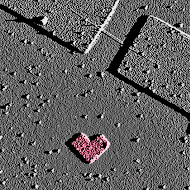During this year I worked a on
mechanical resonators made of carbon nanotubes.
In general we have two types of carbon nanotubes (CNTs):
single-walled (SWNT) and multi-walled (MWNT). I also put the pictures, for those who never got the chance to see them before. As the name suggests they are simply very little tubes, but their big advantage for mechanics and electronics is that they are very robust (the most robust material on earth, in fact!) and electrically conductive.
If you want to think of nanotubes for electrical applications, you can consider them as a small cables for nano or micro electrical circuits (easy, they in fact look like small cables) or semiconducting parts of transistor (a bit more difficult).
If you want to think how to apply nanotube mechanical properties, it`s maybe a bit more difficult. One single nanotube is normally too small to be of any use for our world, but is you use big amount of nanotube you can use it to reinforce materials, such as polymers.
Now the last part, think of putting together mechanical and electrical properties of CNTs. One of the options is inducing vibrations of a nanotube (just as you make a guitar string vibrate), but not with mechanical force, but with electric field. (That was exactly the subject of my talk from the previous post!)
Apparently, those little vibrating systems present various interesting properties, quite different from macro-scale. Also resonators made of SWNTs are quite different of those ones made from MWNTs. They can have very good perspective for
giga-hertz (GHz) frequency processing and
mass sensing.

